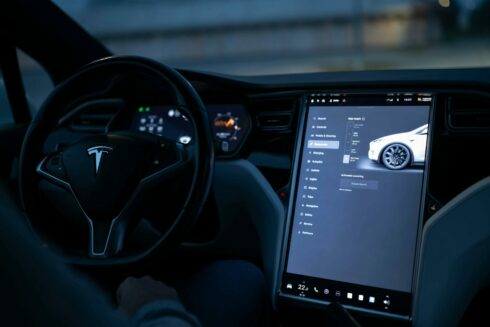
Cars today are complex pieces of software. You’ve got the infotainment system connected to your phone. You’ve got the lane keep assist that lets you know when you’re starting to sway from your lane. You may even have a backup alert system that warns you that there’s a person walking near your car.
So now, on top of all the other components a car needs to function, software is also now in the mix, creating a complex ecosystem that cannot fail at any point.
In the most recent episode of our podcast What the Dev, we were joined by Cameron van Orman, chief strategy & marketing officer and GM of Automotive Solutions at Planview, to talk about how these automakers are managing their software development life cycles.
Here is an edited and abridged version of that conversation:
Let’s talk a little bit about the complexity in making these cars happen, the software. What goes into making these autonomous vehicles?
As you said, David, it’s very complex. You’re taking an industry that drove the Industrial Revolution and became experts over 100 years of mechanical, physical engineering, bending metal, combustion as part of vehicle propulsion. And now this same group that has this 100 years of physical supply chains is now coming a little bit late (but fast) to the party on software. Depending on which auto manufacturer you talk to, you have somewhere between 100 and 500 million lines of code in a current automobile — and I’m not just talking EVs. Even in a traditional internal combustion engine propelled car there’s a lot of complexity in all that software built and designed from not just the OEM, but a multi-tiered supply chain. How do you get all that integrated, working, and effective and delivering transformative experiences for us as drivers and passengers?
Building cars had always been a very mechanical kind of a process. Now it’s much more of a digital process in many ways. I mean, it’s the merger of both, actually. How are automakers adapting?
It’s a complete change, arguably. I heard one of the world’s largest cloud infrastructure providers accuse the automobile industries of being the last stalwarts in adopting cloud, and many of them are still on-prem, yet they’re really adopting all this modern software so quickly. In the last 10 years, there’s just been this explosion of code and software in a car, but there’s still a challenge in this Agile transformation, digital transformation, that’s going on in an industry that has this deep heritage in physical manufacturing and bending metal.
Launches of a new car platform or a new car model are often now dependent on software. Mark Fields — he’s the former CEO and chairman of Ford — is chairman of Planview, and so I’ve had the opportunity to talk at length with him on this topic. And over 100 years, auto manufacturers have really perfected and have this great visibility into everything physical that goes into the launch of a new vehicle, all the design and aero and compulsion and combustion and all the tooling of factories, but now it’s software that’s causing models to be delayed. In some cases, it’s causing executives — and we saw it over in Europe — to lose their jobs.
And unlike physical manufacturing with this long history and understanding of the burn down — you start with a gazillion items to do, and every week you have your meeting, and items just get reduced until it’s ready to launch — that’s not the way software development works. And auto companies are grappling with predictability and efficiency of their software supply chain, not just their physical supply chain. If software is late or is going to delay a launch of a platform, that can cost ten of millions of dollars, as you have physical plants that have been tooled up and sitting idle.
What about the testing of that software? Obviously, this has to be mission critical stuff. You can’t have a software defined vehicle have a failure, that would be catastrophic. So how does that work in terms of when you talk about portfolio planning, how much of the pre-planning has to go into it to ensure things like that aren’t happening?
A lot. How do you have that visibility into the full life cycle effectiveness, flow, predictability and throughput of your software tool chain and software development processes. And what’s really unique about the auto industry is when we talk about technology buzzwords like DevOps or value stream management, most often we think about it in the confines of a single organization. But in automotive you’ve got to think about it across their distributed set of suppliers and companies, from the OEMs the tier ones to the tier twos.
As a driver or passenger in an automobile you don’t know — whether it’s the braking system or the infotainment center — was the software that manages it and runs it, was that built and coded by the OEM, by the tier one, by a sub component supplier? And you don’t care. It’s all got to work together.
And so the complexity of your software development life cycle and the need for visibility is far greater. Single companies struggle with visibility across their DevOps or software life cycles across all the steps and tools. Magnify that by OEMs, who have their own divisions and regions and silos, and then they have their own complex configuration of suppliers that can number in the hundreds. You need that visibility. And you talked about quality. You need that traceability.
As we were sort of preparing for the call you talked about your wife having issues with the infotainment system. So, you go to the local dealer or mechanic shop, and they’ve got to flag that IT software issue up to the OEM. The OEM has to figure out who really created that code, tier one, tier two, and it’s got to trace it all the way through to that development team. They’ve got to see it. They’ve got to then fix it, and it’s got to push it all the way back up and ultimately, into the car, right? And that traceability is so important.





